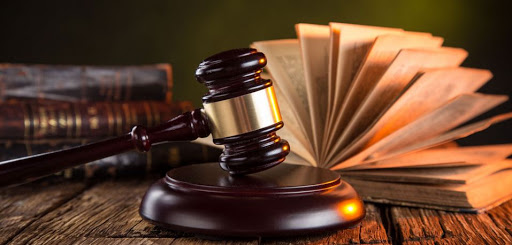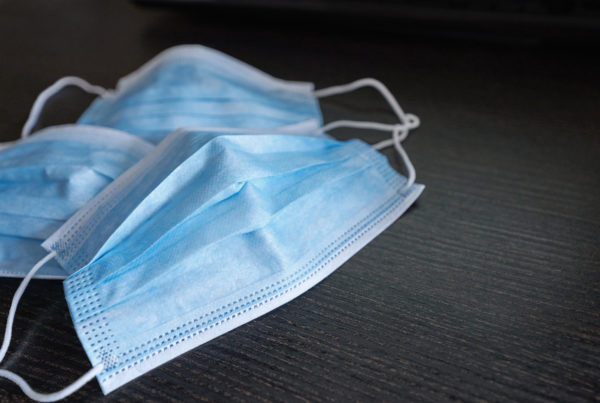On May 22, 2020, the SBA issued two new Interim Final Rules relating to Paycheck Protection Program (“PPP”) loan forgiveness, one rule with guidance for borrowers regarding requirements for loan forgiveness, which can be found here, and the other rule with guidance for lenders regarding PPP loan review procedure and lender responsibilities, which can be found here.
Because this is an ever-evolving topic, it is important to stay up to date on the latest rules. FOS has provided previous guidance on the PPP Loan Forgiveness Application, the PPP, as well as the previous interim final rule issued by the SBA relating to the PPP.
PPP loans began to be disbursed in the early days of April, and since that time, borrowers have been clamoring for additional information regarding the loan forgiveness process. These new interim final rules provide some critical additional detail but, as with past guidance issued by the government, can also lead to more questions than answers. Below is a summary of some of the significant clarifications these interim rules provide. As always, if you have additional questions, contact your FOS attorney, accountant or lender for assistance.
GENERAL NOTES
Both new interim final rules govern loan forgiveness applications submitted under the PPP. Note further that the SBA has asked that the typical 30-day comment period and delayed effective date be waived, “to meet lenders’ and borrowers’ need for clarity concerning loan forgiveness requirements as rapidly as possible because borrowers can seek loan forgiveness as early as eight weeks following the date of disbursement of their PPP loans.”
The SBA also notes that by making these interim final rules immediately applicable, “PPP borrowers will be able to take immediate steps to maximize their loan forgiveness amounts, for example, by either rehiring employees or not laying off employees during the covered period.” Given that many borrowers received their loan disbursements weeks ago, that ship may have already sailed for certain businesses. However, if additional changes can be made to maximize the amount of loan forgiveness, borrowers can rely in good faith on this interim guidance.
INTERIM FINAL RULE REGARDING LOAN FORGIVENESS
• The clock is ticking. PPP loans began to be disbursed on April 3, 2020. The 8-week (56-day) covered period generally begins the day that the loan was or is disbursed (unless borrowers are eligible to choose the “Alternative Payroll Covered Period”). Lenders are required to determine if a loan is eligible for forgiveness within 60 days of receipt of the loan forgiveness application. However, it is now clear that, after a lender reviews the loan forgiveness application and makes its determination, the SBA then has 90 days to review the lender’s decision on forgiveness and remit payment to the lender. This means that even a borrower who received its PPP loan on the first day of disbursement and submitted its application for loan forgiveness on the day after the covered period ends, a “final” decision might not be received until the end of October. For borrowers seeking to have some certainty as to the treatment of their loans in 2020, it would be prudent to submit their loan forgiveness applications as quickly as possible.
• Lender provides initial approval, but SBA has final say. “As a general matter, the lender will review the application and make a decision regarding loan forgiveness. The lender has 60 days from receipt of a complete application to issue a decision to SBA.” After the SBA receives the lender’s decision, the SBA then has 90 days to review the lender’s determination and remit payment back to the lender. Note, however, that the SBA retains the right to review “any loan at any time…” And, “[i]f SBA determines in the course of its review that the borrower was ineligible for the PPP loan based on provisions of the CARES Act, SBA rules or guidance available at the time of the borrower’s loan application, or the terms of the borrower’s PPP loan application (for example, because the borrower lacked an adequate basis for the certifications that it made in its PPP loan application), the loan will not be eligible for loan forgiveness.” This process generally applies for loan applications that are not reviewed until after the lender makes its determination. The SBA has promised additional guidance on its procedures for reviewing PPP loan applications and loan forgiveness applications.
• Unforgiven amounts of a PPP loan are due on or before the 2-year maturity date.
• Eligible payroll costs include those that have been paid OR incurred during the covered period or “alternative payroll covered period.”
• The “alternative payroll covered period” can only be used for borrowers with a bi-weekly or more frequent payroll cycle.
• Bonuses and hazard pay are eligible for loan forgiveness. Many employers have questioned if bonuses paid to employees are eligible for loan forgiveness. This interim final rule makes clear that “if an employee’s total compensation does not exceed $100,000 on an annualized basis, the employee’s hazard pay and bonuses are eligible for loan forgiveness because they constitute a supplement to salary or wages, and are thus a similar form of compensation.”
• Owner-employees and self-employed individuals may be subject to a lower payroll cap than $100,000 annually. The interim final rule, for the first time, indicates that for owner-employees or self-employed individuals, the cap on total payroll compensation eligible for forgiveness “can be no more than the lesser of 8/52 of 2019 compensation (i.e., approximately 15.38 percent of 2019 compensation) or $15,385 per individual in total across all businesses.” Payroll compensation includes cash compensation and employer retirement and health care contributions made on their behalf. Schedule C filers and general partners are subject to separate caps, and should work carefully to confirm that the appropriate 2019 compensation is used as a benchmark.
• Nonpayroll costs eligible for loan forgiveness include costs paid OR incurred during the covered period. Companies can count any amounts actually paid during the 8- week period, plus a pro-rated amount for nonpayroll costs incurred during the covered period and paid on the next regular billing date.
• Advanced payments of interest on mortgage obligations are not eligible for loan forgiveness.
• Eligible loan forgiveness will not be reduced for borrowers who have offered to rehire employees or restore employee hours, even as to employees who refuse to return to work. “Employees who the borrower offered to rehire are generally exempt from the CARES Act’s loan forgiveness reduction calculation.”
• Employers will not be penalized twice if they have both a reduction in full-time employees (i.e. a reduction in staff or hours) and a reduction in salary and wages. “To ensure that borrowers are not doubly penalized, the salary/wage reduction applies only to the portion of the decline in employee salary and wages that is not attributable to the [Full Time Employee] reduction.” The rules also make clear that a reduction for wages is calculated on a per-employee basis, and not in the aggregate. Total loan forgiveness is then reduced by the total wage reduction in excess of 25% of base salary and wages in comparison to the reference period.
• Confirmation that borrowers that restore salary/wages or the number of full-time employees by June 30, 2020 will not be subject to any reduction in potential loan forgiveness.
• Confirmation that the amount of loan forgiveness will not be reduced if an employee is fired for cause, voluntarily resigns, or voluntarily requests a schedule reduction. However, employers must be careful to document such instances and be prepared to provide documentation to the SBA upon request.
INTERIM FINAL RULE REGARDING SBA REVIEW AND BORROWER AND LENDER RESPONSIBILITIES
• The SBA may review individual PPP loans. “SBA may review any PPP loan, as the Administrator deems appropriate.” Such review can include borrower eligibility for a PPP loan (under the CARES Act, the rules and guidance available when the application was made, and the terms of the loan application submitted), the amount of the loan and use of the loan proceeds, and the loan forgiveness amount.
• The time period for SBA review is undefined, and any size loan can be reviewed. “For a PPP loan of any size, SBA may undertake a review at any time in SBA’s discretion.” For this reason, “the borrower must retain PPP documentation in its files for six years after the date the loan is forgiven or repaid in full, and permit authorized representatives of SBA, including representatives of its Office of Inspector General, to access such files upon request.” “SBA may begin a review of any PPP loan of any size at any time in SBA’s discretion.” While prior guidance created a safe harbor regarding the certification regarding economic uncertainty and the need for loans under $2 million (see SBA Announces $2MM Safe Harbor To Meet Good Faith Certification Requirement), this interim final rule emphasizes the SBA’s authority to review any PPP loan.
• The SBA can deny loan forgiveness. “If SBA determines that a borrower is ineligible for the PPP loan, SBA will direct the lender to deny the loan forgiveness application…SBA may also seek repayment of the outstanding PPP loan balance or pursue other available remedies.” (emphasis added)
• Ineligible borrowers are not subject to the CARES Act nonrecourse provisions. This interim final rule takes care to emphasize that the CARES Act nonrecourse provision “limits SBA’s recourse against individual shareholders, members or partners of a PPP borrower for nonpayment of a PPP loan only if the borrower is an eligible recipient of the loan.” (emphasis added)
• A separate interim final rule will be issued outlining the appeals process if the SBA determines that a borrower is ineligible for a PPP loan or ineligible for loan forgiveness.
• Lenders are to review and confirm receipt of all portions of the loan forgiveness application. While borrowers are responsible for accurately calculating and submitting their loan forgiveness applications, “Lenders are expected to perform a good-faith review, in a reasonable time, of the borrower’s calculations and supporting documents concerning amounts eligible for loan forgiveness.” The level of scrutiny any application receives will in part depend on the reliability of the documentation that borrowers provide (for example, using a third-party payroll provider’s records versus payroll documentation from an unfamiliar source). Lenders are also advised to work with a borrower if there are errors in borrower’s calculations or the documentation submitted is incomplete.
• If the SBA elects to review a PPP loan, it will notify the lender in writing, and the lender must then notify the borrower within 5 business days.
CONCLUSION
Undoubtedly, borrowers will continue to have questions regarding their particular circumstances and their loan forgiveness application. Borrowers should look for additional guidance and directions from their lenders, and work carefully with their FOS attorneys, tax advisors and accountants in navigating the PPP loan forgiveness (and potential appeal) process. If you have any questions about PPP, the Loan Forgiveness Application, or any other legal matter, please contact your FOS attorney.
Be well.



